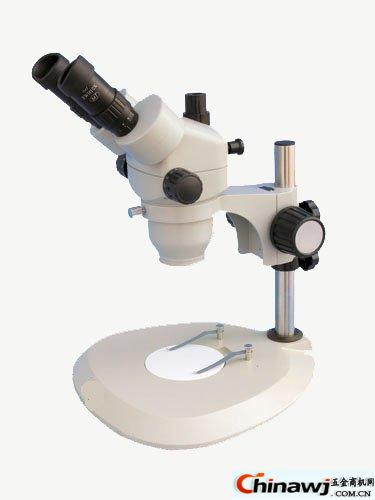Basic maintenance of Chengdu microscope 1. Dust and dust will not only affect the image quality, but also dust with corrosive dust such as acid and alkali, which is easy to corrode the mirror surface. Dust particles with high hardness may also scratch the mirror surface when wiping the lens, damaging the lens. In addition, when the dust falls into the mechanical moving part, the mechanical part is easily inflexible or even damaged.
Second, the anti-corrosion microscope can not be exposed to acids and alkalis. Also do not put together volatile chemicals and other harmful chemicals to avoid corrosion of the lens.
3. The anti-hyperthermal microscope is composed of precise mechanical and optical lenses. Due to the different thermal expansion coefficients of various materials, the microscope cannot be exposed to sunlight or placed close to the stove and heating. It can only be stored indoors, and its working temperature range is generally 5 to 40 °C.
4. Moisture-proof If the lens is wet for a long time, the lens is prone to mildew and the surface will be corroded, so it should be stored in a dry environment. At 31 ° C, the humidity should not be greater than 80%, and for every 3 degrees Celsius increase in temperature, the relative humidity should be reduced by 10%.
5. The shockproof microscope is a precision instrument, and the severe vibration will cause a decrease in precision. To handle it gently, keep it steady, and use it when it is used.
Six, wipe
(1) If the wiping mechanism of the mechanical device has stains, it can be wiped with a clean soft cloth; if it cannot be wiped off, wipe it with a mirror paper or a fine silk cloth. It should be noted that chemical crystals such as alcohol and ether should not be used to avoid corrosion of the paint on the surface of the device.
(2) The wiping of the optical lens generally adopts the method of first blowing, then brushing, and then wiping. Blowing is to blow off the attachment on the lens surface with a blower (or with an ear wash). But you can't blow directly with your mouth. When you can't blow it, use a clean special cleaning brush to gently brush. When there is still dirt on the surface of the lens after the above two methods are treated, gently wipe it with a little bit of xylene on the lens paper.
If you find that the lens is moldy and foggy, you can use a pair of mirror paper and a mixture of anhydrous alcohol and ether, but the liquid should not be too much, and the residence time should be short to avoid corrosion inside the lens.
The oil lens should be wiped in time after each use. First wipe it with dry rubbing paper, remove most of the medium oil, wipe it twice with xylene dampening paper, and then wipe it once with dry paper. .
7. The surface of other optical lenses should not be touched by hand to avoid contamination. The device with tension acts to return it to a natural relaxed state after use. It is best not to place any adjustable part in an extreme position. Do not switch the power switch frequently for a short time. The brightness of the microscope should be lowered during the use of the microscope. Never leave the sample on the stage for a long time. Especially when there are volatile substances, you should pay attention to this point.

Conforms to the requirements of EN12209-3
Single deadbolts with one or two throws.
Bolts can be optioned to be operating by key or lever
Large range of cylinders conforming to EN1303 with various features.
The KA and MK/GMK are available
Material: Stainless steel 201 304 316
Dead Bolt Mortise Lock,Pin Inside Pin Lock Cylinder,Pin Inside Pin Cylinder Lock,Dead Bolt Door Mortise Lock
Rayma(SJZ) International Trading Co., Ltd. , http://www.raymalock.com
